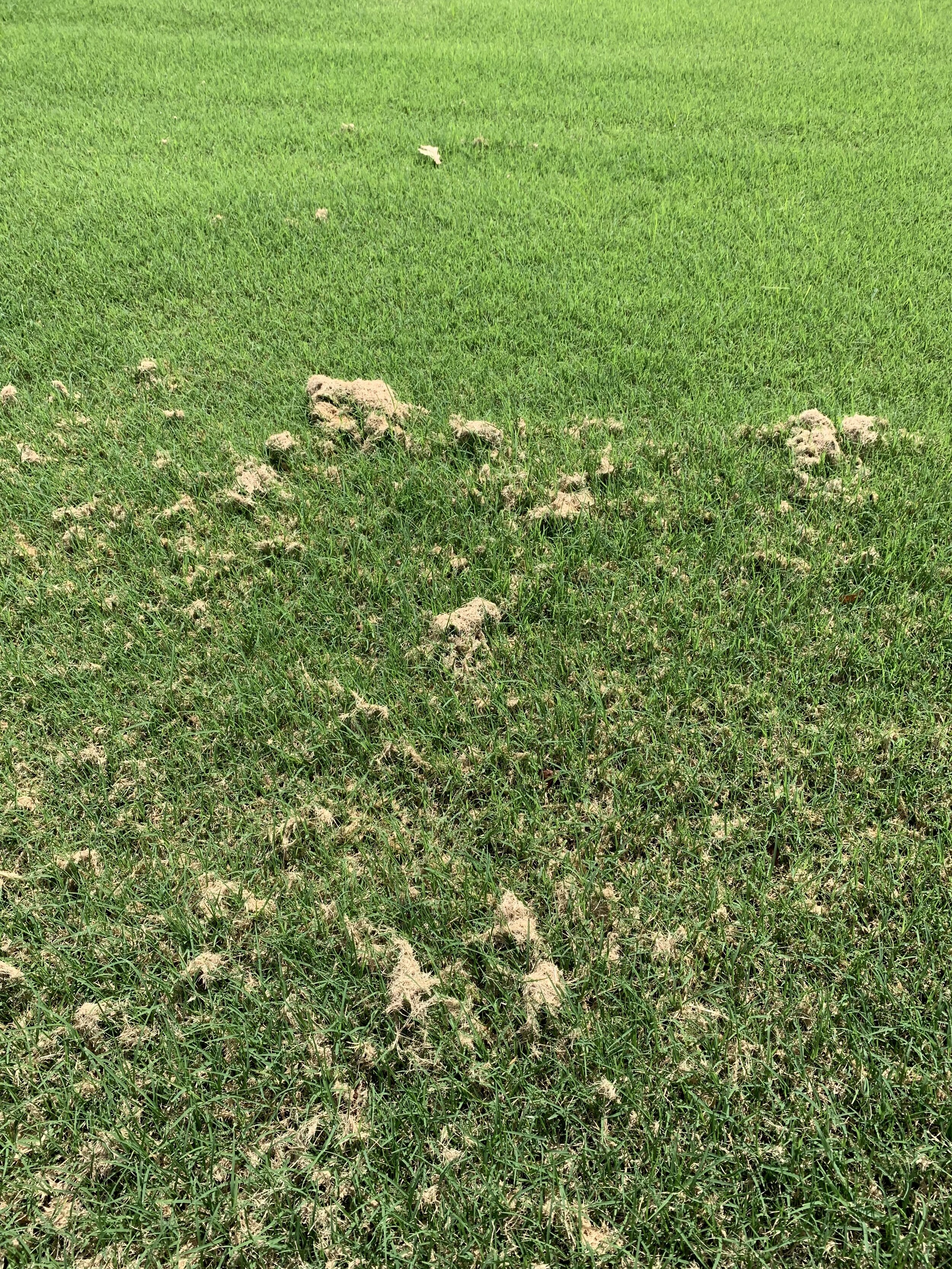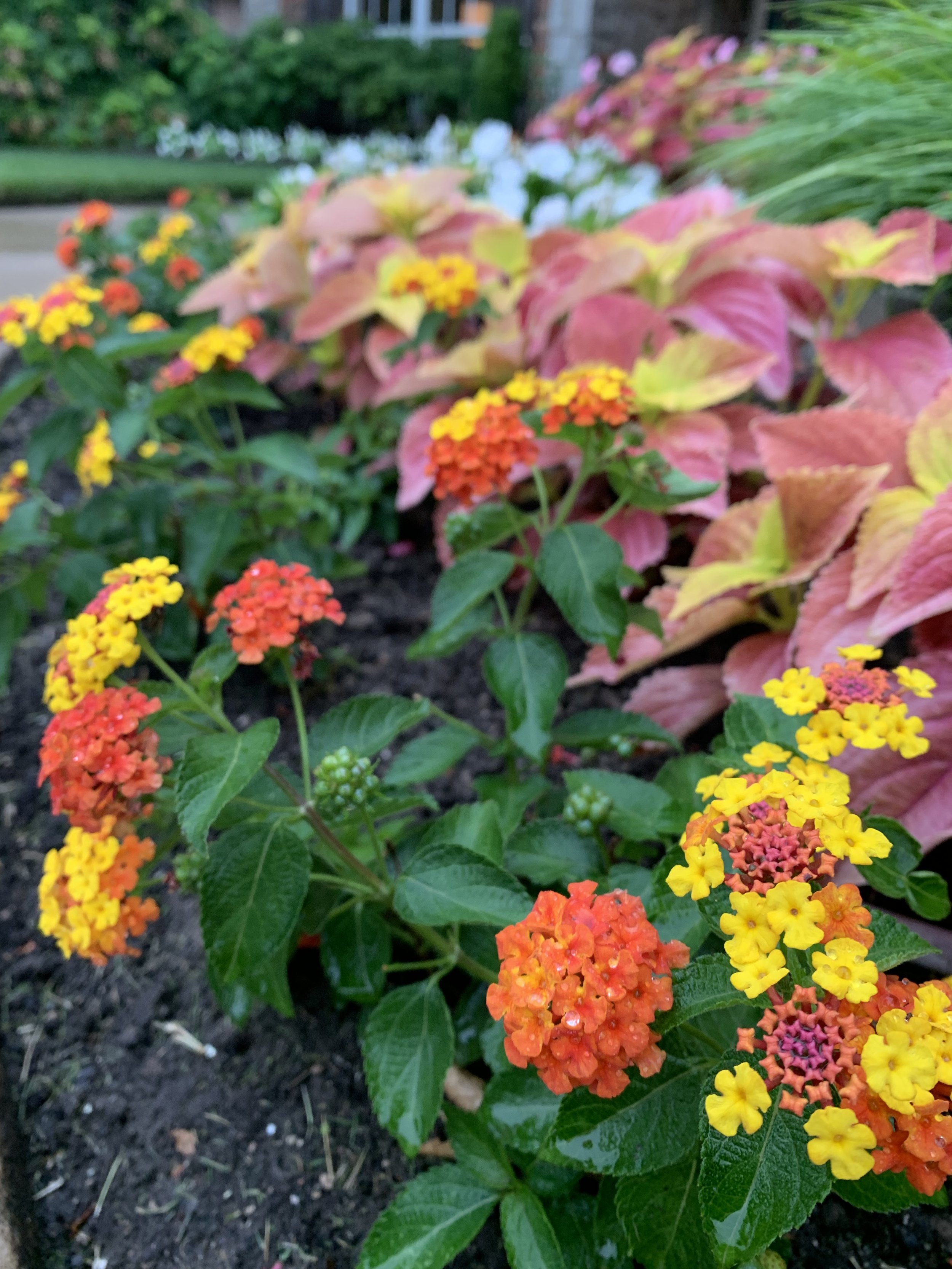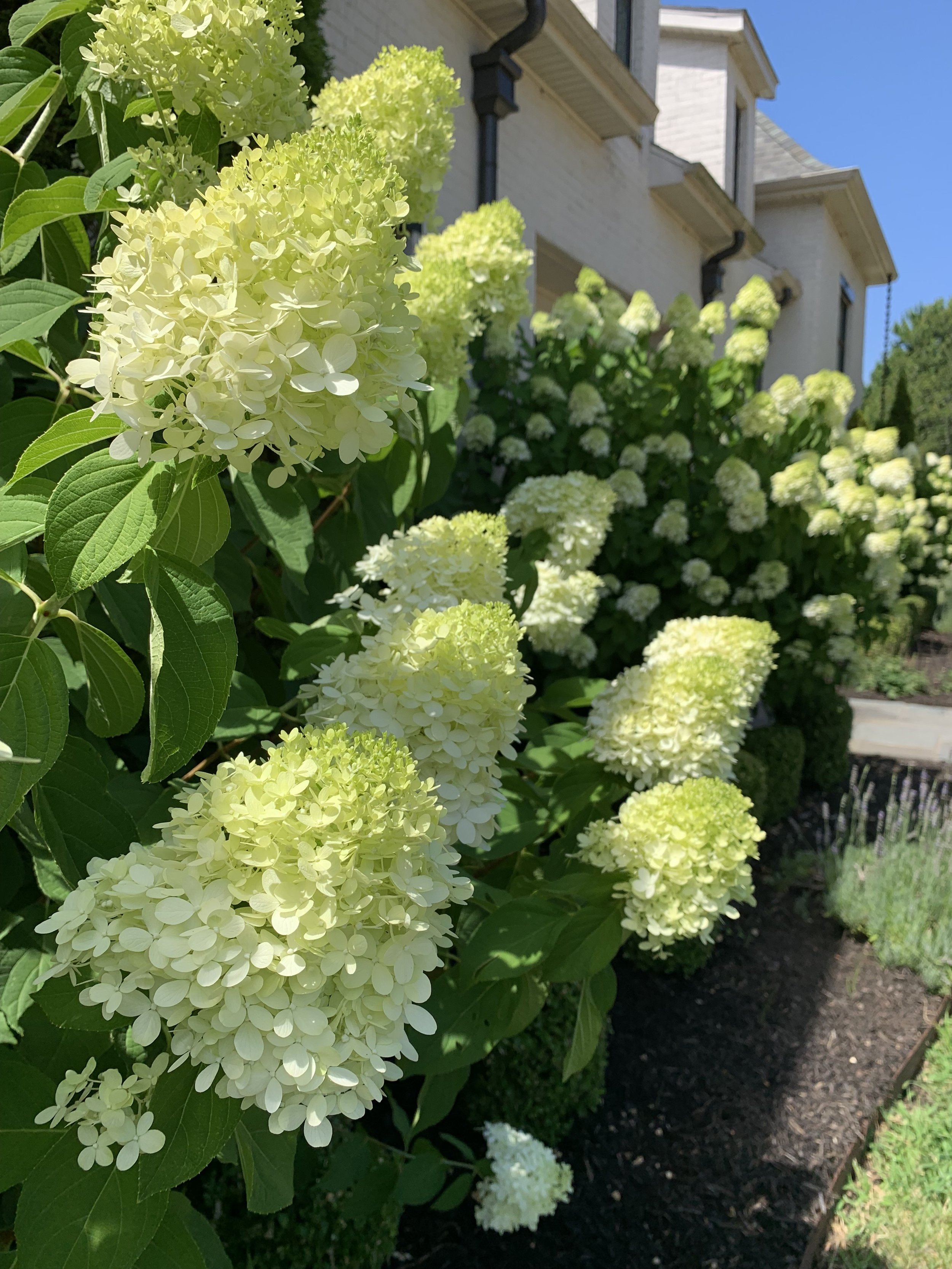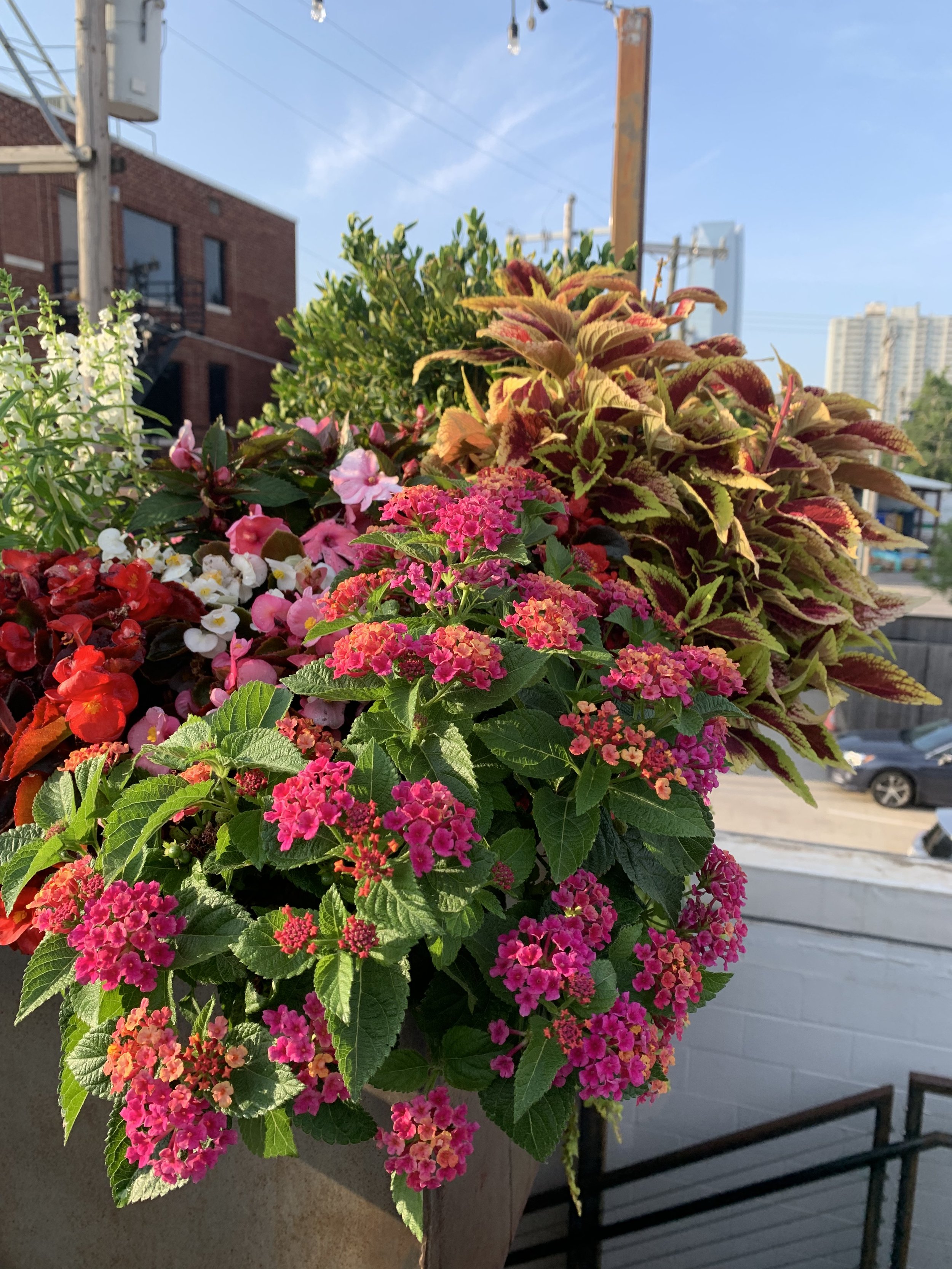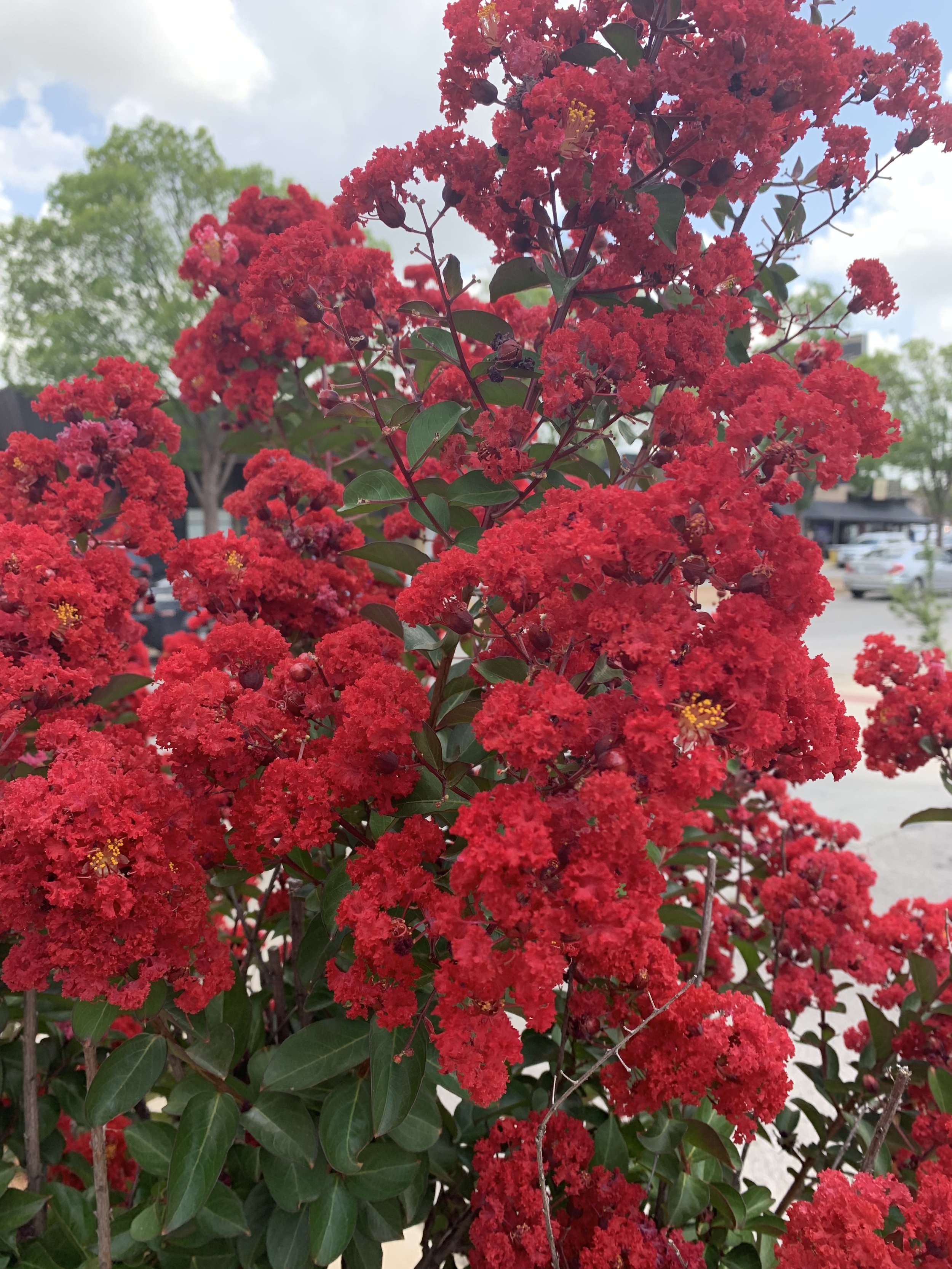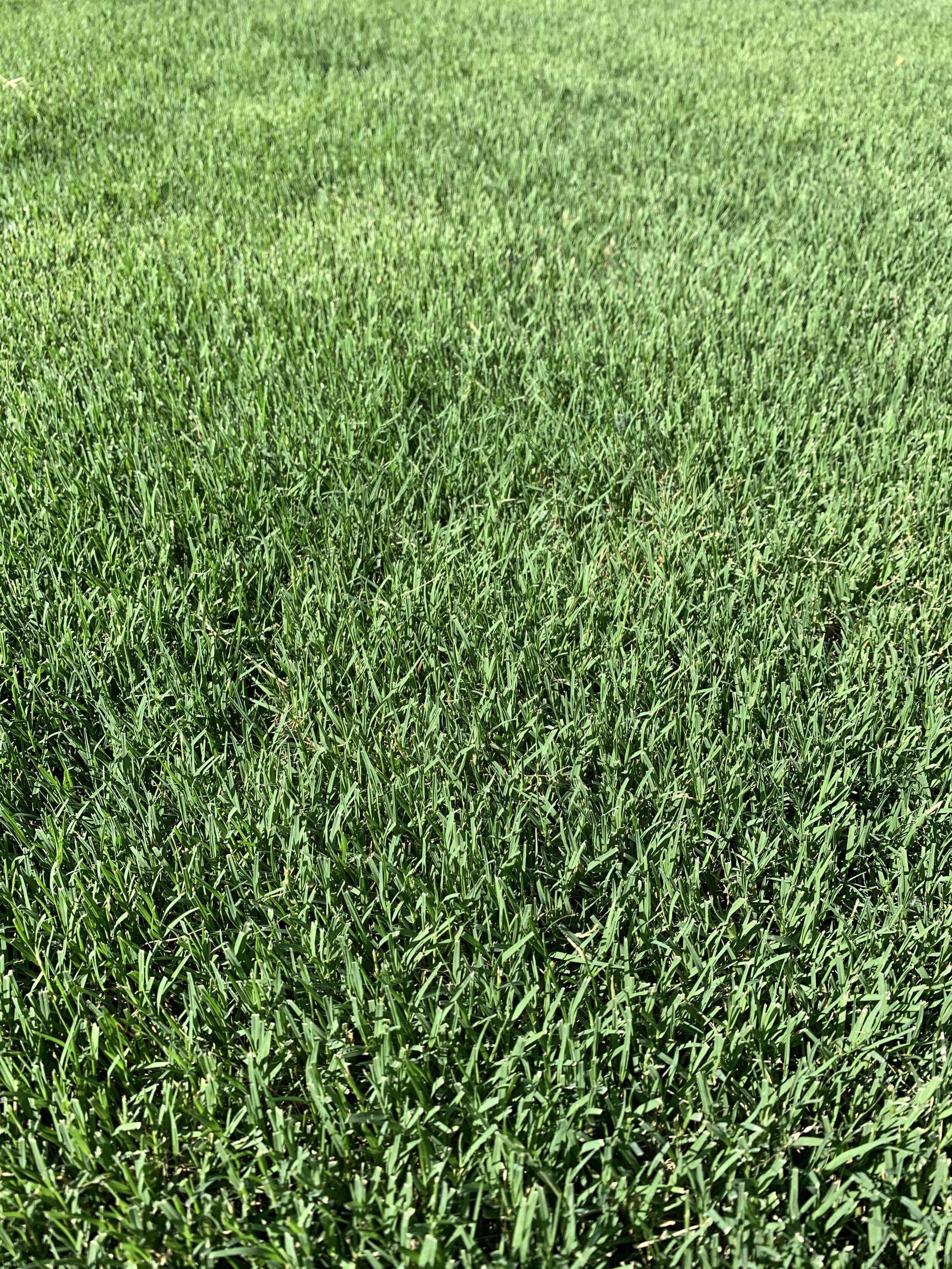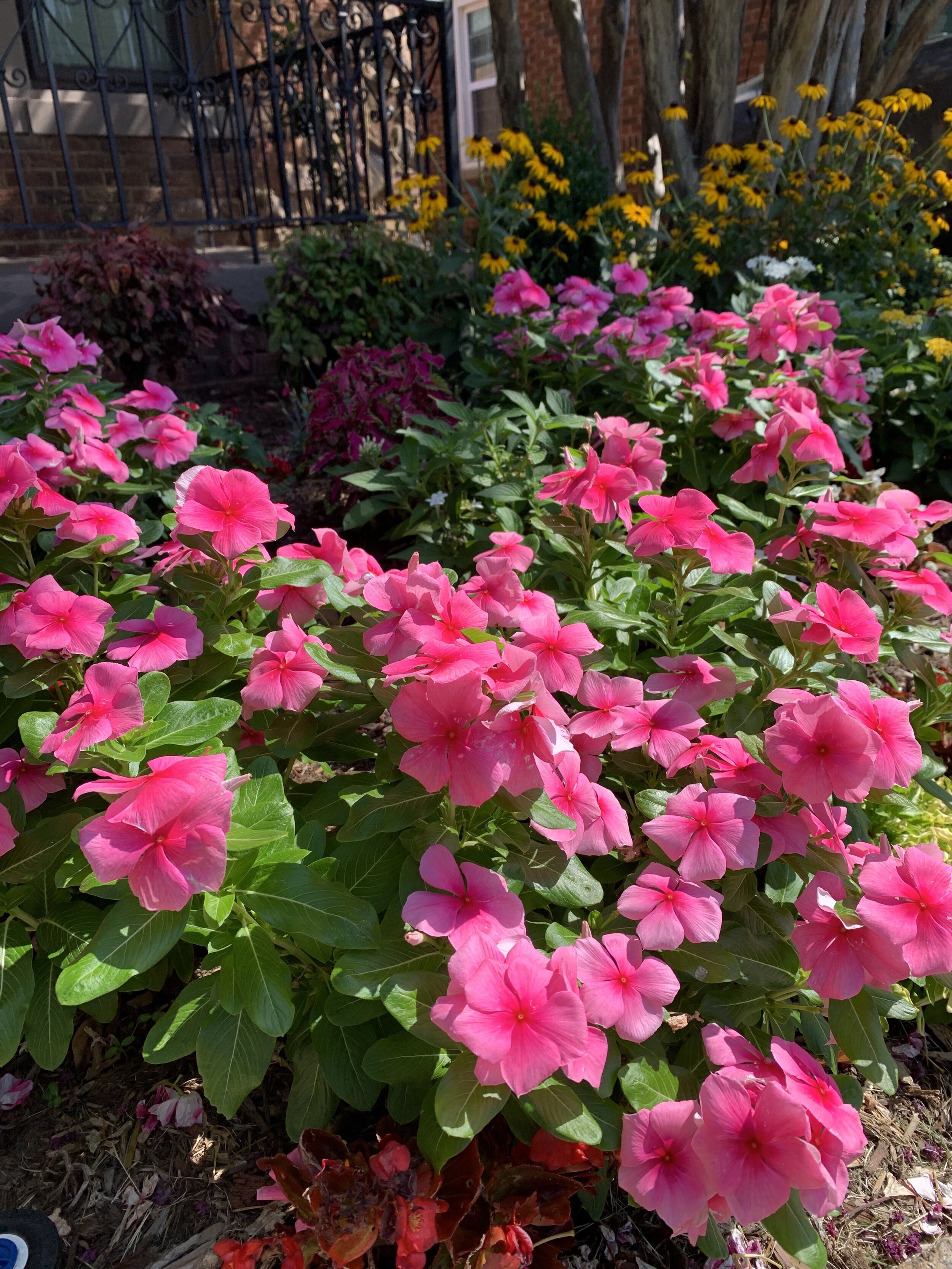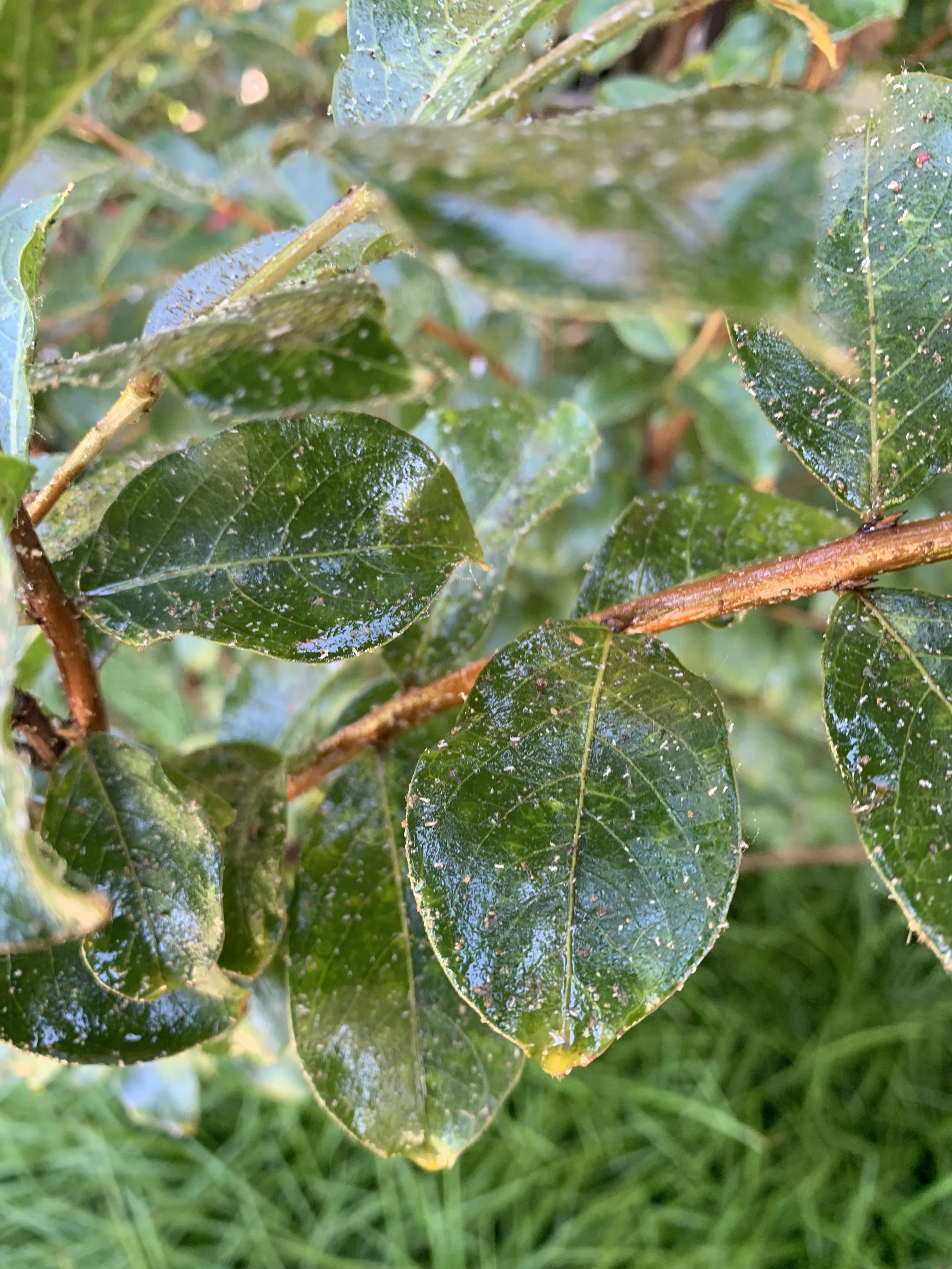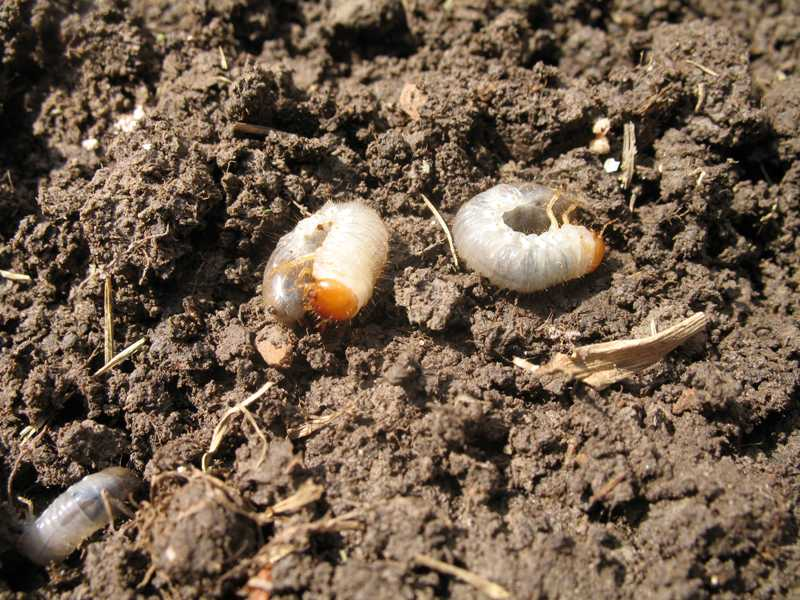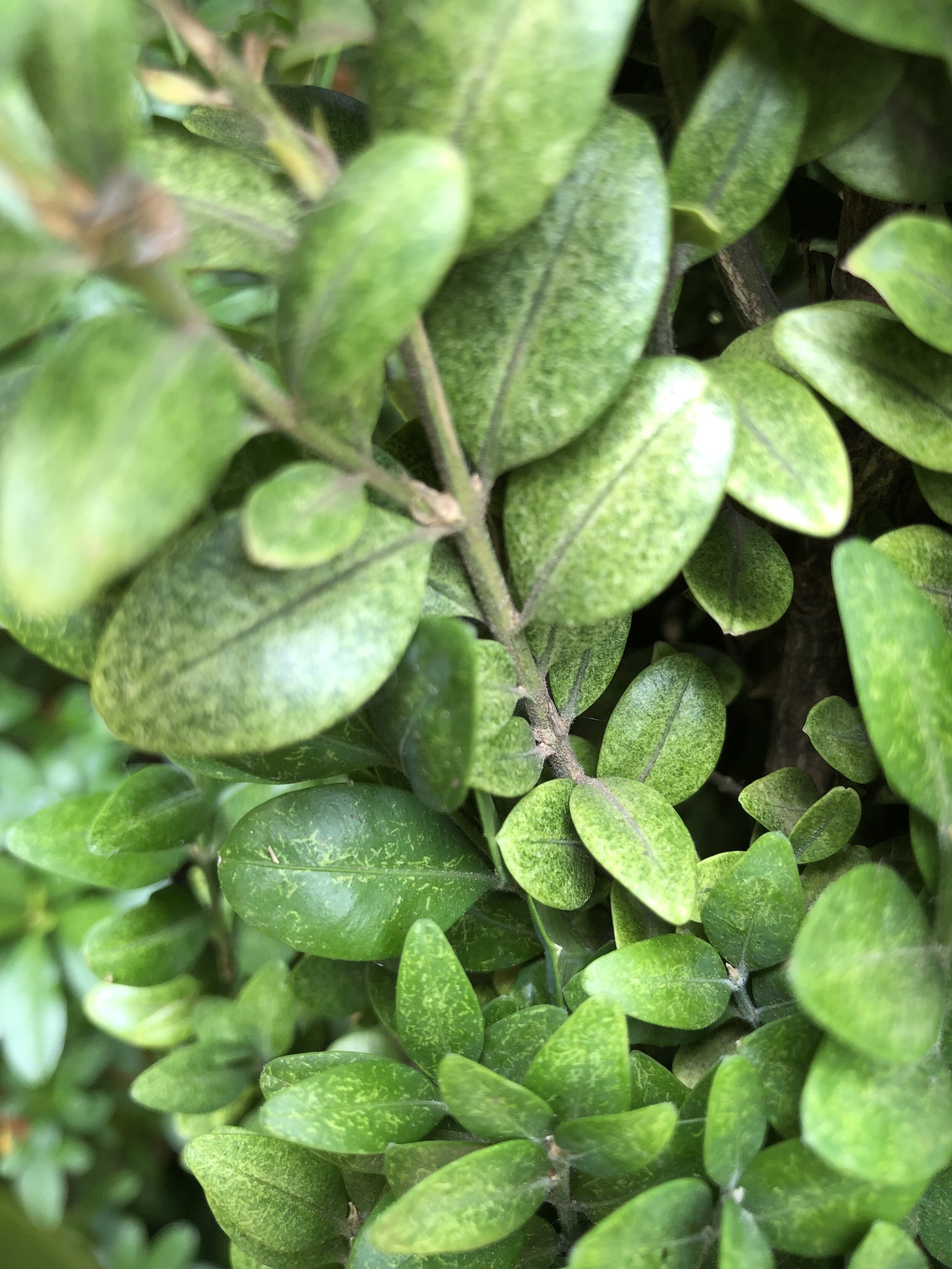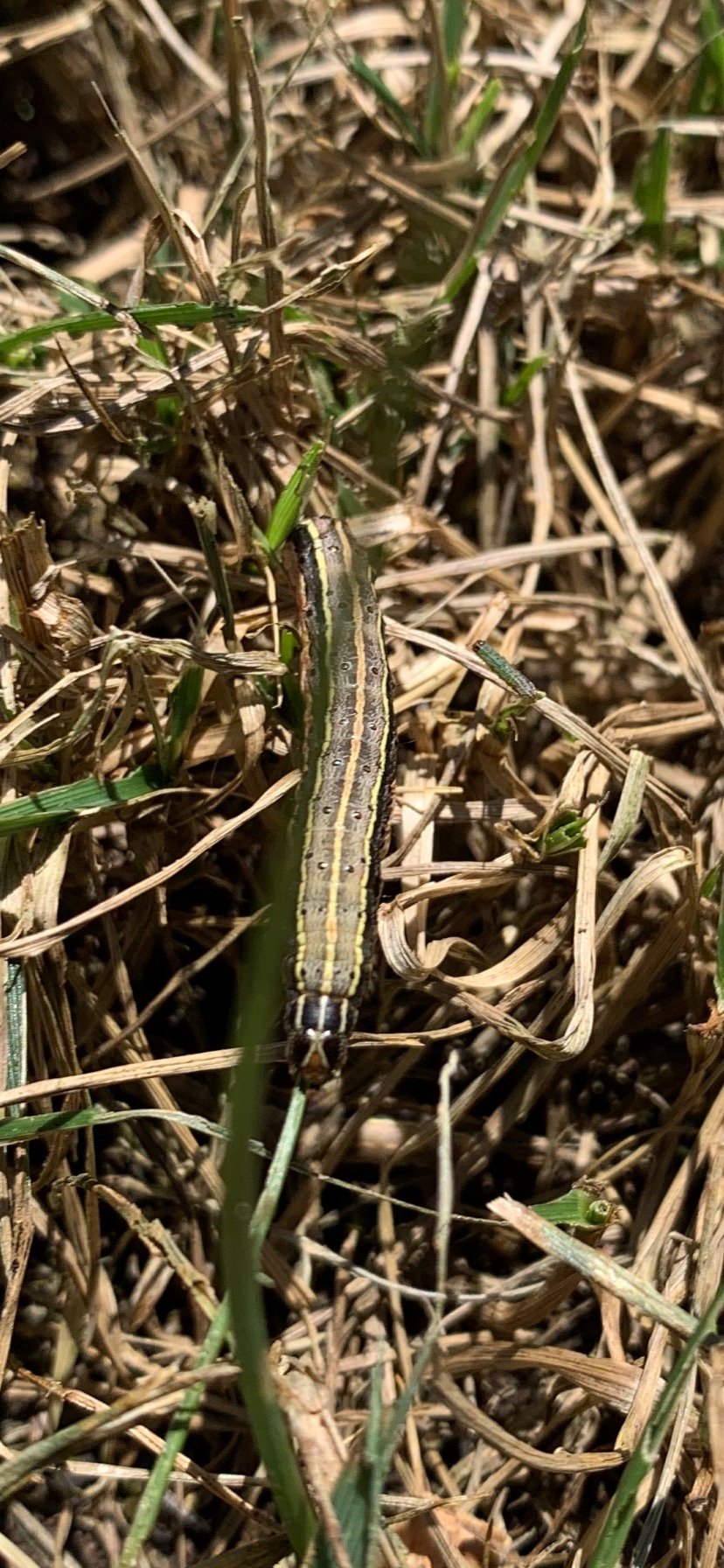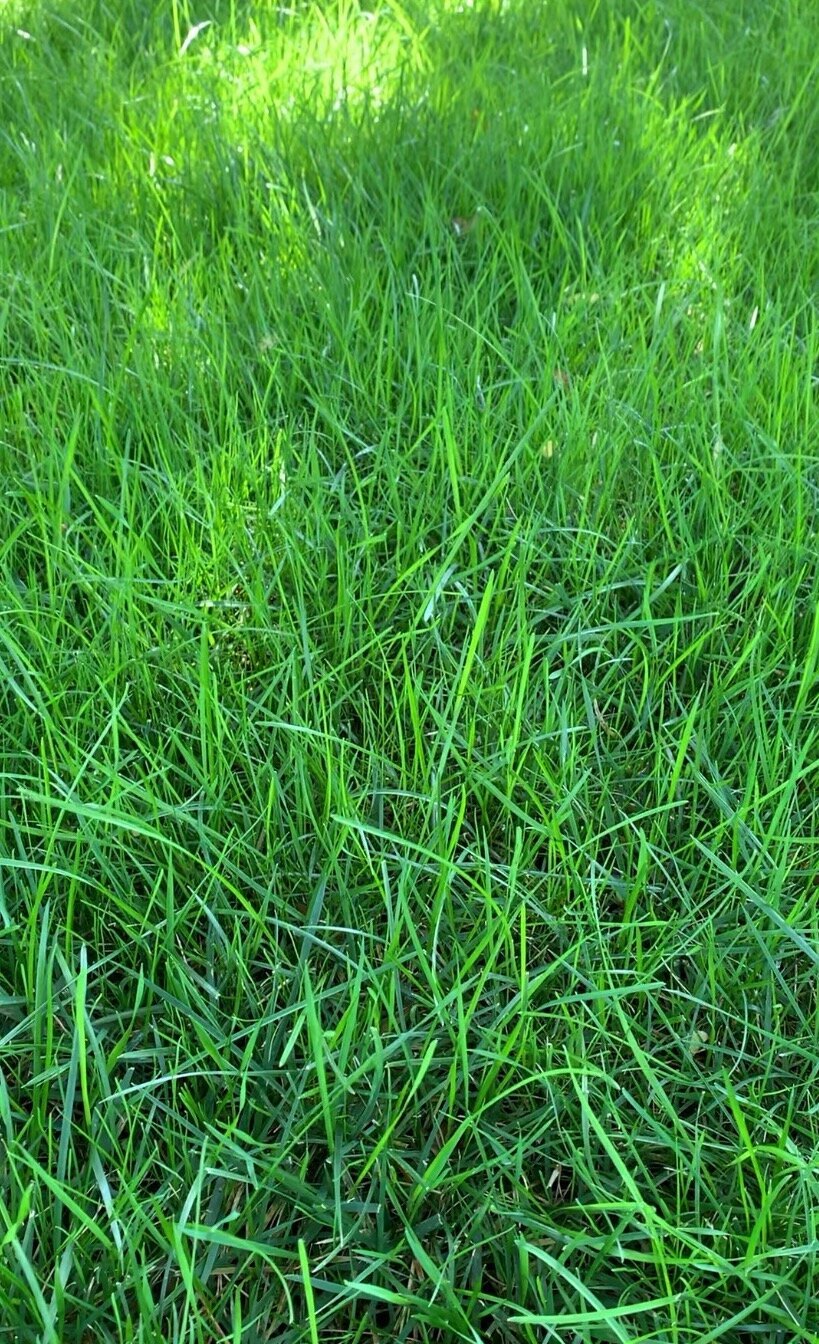
July Lawn & Landscape Tips
Wow, June, traditionally one of central Oklahoma’s wettest months really fell short! Many lawns and landscapes are showing heat and drought stress earlier than normal this year. Now, we are headed into one of our hottest months and with more stress for your lawn and landscape on the horizon.
How can you help your landscape not only survive, but thrive through July? Let’s take a look:
Watering – The biggest determiner on your lawn and landscape thriving through the hottest and driest periods of the summer is practicing the best water techniques. I know…we are repeating ourselves, but it is so important that we are going to keep saying it.
Best watering practices:
Water 1” to 1.5” per week.
Place the Hall|Stewart Rain Gauge in your lawn, give your lawn a good deep soaking and then check the gauge. If you have ½” of water in the gauge you need to water 3 times per week.
Water deep. If you can get ¾-1” of water on your lawn without excessive runoff, water every 4 days. Deep watering creates deep roots and a more drought tolerant lawn.
Set your controller to water with back-to-back run times. If a zone needs to run 30 minutes to get the correct amount of water, set it for 15 minutes and program two start times an hour or two apart. Example: 4:00 AM & 5:00 AM. This ‘Best Practice” will increase the amount of water that soaks into your lawn and reduce the amount of runoff.
Water in the early morning. Evaporation is at the lowest point in the pre-dawn hours and typically wind is at its lowest point. Evening water promotes turf diseases, such as brown patch, and should be avoided.
Daily watering does more harm than good. Short daily watering results in shallow rooted turf and a lawn dependent on constant moisture to survive.
Anytime we receive ½” of rain or more, don’t water for a few days.
Aeration improves moisture absorption.
Watering Tip –
Most people don’t realize how long you need to run the sprinkler to get 1” to 1.5” moisture on your lawn in a week. If your lawn and landscape are struggling, take time to place cans around the lawn to collect water. Water your lawn as you normally do and then measure the amount of water in the containers.
If you collected 1/3” to ½”, you are watering long enough for every other day watering.
If you didn’t collect enough during a typical watering, increase the water time and continue watering every other day.
The temptation is to start watering every day, but this creates a shallow rooted landscape that is more dependent on daily water.
Deep watering every other day is the key to a lawn that will thrive in July.
We are a strong believer in the benefits of not catching your clippings when mowing as long as they are not noticeable. Heavy clippings always need to be cleared from the turf.
Mowing Tip -
One of the biggest differences between a good lawn and a great lawn in the heat of the year is not bagging the clippings. Allowing finely mowed clippings to stay on the lawn returns moisture and nutrients to the soil.
This picture taken on Friday of a fescue lawn demonstrates that fescue is heat tolerant when best practices are followed: deep watering every other day, mowing at 3” with no more than 1/3 cut off per time, and not bagging the clippings.
Mowing – For warm season turfs (Bermuda and zoysia) gradually raise the height of your mower. Bermuda should be mowed between 1.5” to 2.5” during the summer heat. Fescue, cool season turf, should be maintained at its maximum height, 3” to 3.5” now. The more leaf space you have the more drought resistant your lawn will be. Mow often enough that you only remove 1/3” of the grass each time. For healthy, irrigated, and fertilized Bermuda, if possible, mow every 4-5 days for the best lawn. If you are mowing often enough and only removing 1/3 of the growth, don’t catch the clippings. Grass leaves are mostly water and nitrogen and break down very quickly into the soil. If your lawn has a brown cast to it after you mow, you are cutting below the leaves and into the stems. Stems do not break down quickly and can lead to thatch build-up, so if this is the case, it is best to bag when mowing.
Mulch mowing is one of the most beneficial things you can do for your lawn. The key is mowing frequently enough that you are removing no more than 1/3 of the leaf blade.
The tropical type flowers of hardy hibiscus thrive in the heat of July.
Lantana and Coleus are heat loving annual summer color plants.
Limelight Hydrangea
Limelight Hydrangeas grace the July landscapes with large lime-white blooms.
Brown Patch – One benefit of the dry air of July is less brown patch disease in fescue lawns. Brown patch occurs when there is excessive moisture, high humidity, and/or high dew points when nighttime temperatures are in the 70s or more and daytime temperatures are in the 90s. Brown patch is worse in areas with dense shade and/or low wind movement. Anytime the leaf blades of your fescue stay wet for more than 6 hours at a time in the summer, brown patch is unavoidable.
The temptation is to water fescue more frequently in the summer. It is common for us to find fescue lawns with the irrigation set to run morning and night creating the perfect conditions for the disease to spread. If you have heavy shade and/or low wind movement (most smaller backyards) water after sunrise and no more than every other day. Resist the urge to water more. Your fescue is not dying due to summer heat, it is struggling with brown patch.
Black Eyed Susan is a favorite perennial during the month of July.
Sunpatiens do well through the summer heat in Full Sun to Part Shade.
Penta is another summer annual that enjoys Full Sun to Part Shade.
Brown Patch Disease will make you think your fescue lawn isn’t getting water, so you respond with more water, which makes the lawn look worse, so you water more…. This fescue lawn was extremely wet this week resulting in self-induced Brown Patch.
Fescue Tip –
The key to fescue surviving the summer is not watering more.
The key is deep soaking every other day.
Watering daily, or as some are known to do, watering twice per day, is one of the worse things for fescue in the summer heat.
Keeping fescue wet will always promote Brown Patch disease.
Crape Myrtles respond to the heat of July with bold pinks, purples, whites, and reds.
Through the summer heat Caladiums and Inpatients will perform well in Full Shade to Part Sun.
Fertilizer – Because warm season grasses are actively growing, they need feeding during July. The plan is to use fertilizer with a 3 to 1 to 1 of nitrogen (N), phosphorus (P), and potassium (K), plus iron (Fe) for added color. Most of our soil has plenty of phosphorus and potassium, but nitrogen needs to be replaced. July is a great month for turf development and a thick, healthy growing lawn is the best defense against weeds. Do not fertilize fescue lawns now. As a cool season grass, fertilizer in the heat of the summer on fescue will cause damage.
Bermuda lawns look their best in the heat of the year when they are properly fertilized, mowed and watered.
Periwinkle is one of the best annual color plants during the hottest periods of the summer.
Weed Control – If you are on a regular lawn care application program, and if your first application was made prior to mid-March, you shouldn’t be experiencing many summer annual weeds. A common weed this time of year is nut sedge. Nut sedge thrives in tight, wet soils. Areas with poor drainage and overwatered turf are frequent trouble spots. If you didn’t get an early pre-emergent, you most likely have a good crop of crabgrass now. Controlling weeds in the heat of the year often can cause more damage to the turf than is beneficial. It is important that label instructions are always followed when spraying weeds. Don’t over apply. What is most important in July is developing a thick, healthy turf. If you are too aggressive on weeds now you will have weak spots that are more susceptible to weeds in the future.
Nutsedge
Shrub Pruning – Selective pruning and light shearing should be practiced during the summer heat. If possible, wait to do major pruning during the hottest periods of the summer. Avoid any pruning or shearing on spring blooming plants because you will be removing flower buds and reducing the show next spring.
Early July is your last chance to trim spring blooming plants such as azalea without reducing next spring’s blooms.
Turf areas that receive less than 4 hours of direct sunlight is considered Full Shade. Fescue is the best turf choice in Full Shade to Partial Shade areas.
Aphids
Bagworms
Bag worm
Bagworms continue to be the biggest insect issue currently. Not only are they attacking needle evergreens, but also deciduous trees and shrubs. Inspect your plants frequently.
Aphids thrive in the hot weather resulting in an increase in activity the past couple of weeks. They are easy to spot. Look for glossy, wet looking leaves. The leaves will be sticky and the underside will be covered with insects.
If you see more than an occasional grub when digging in your landscape, we recommend treatment. An occasional grub is good for the environment, but as with most insects, too many and they will cause damage to your lawn.
Insect Watch – The first step to healthy plants is inspecting them regularly and then treating as needed. If you attempt to treat on a schedule, you will find that you often will miss the target pest. These are the insects that are currently most active:
Bagworms – Common on needle evergreens (juniper, cedar, cypress, etc.). If a plant is already stressed due to heat or draught, bagworms can kill the plant. Inspect often and treat as needed.
Aphids – Small sap-sucking insects that leave plants with a honeydew, sticky substance on leaves. Aphids are easy to spot. If the leaves appear unusually glossy stop and look under the leaf and you will find insects hard at work. Aphids thrive in hot, dry conditions.
Spider Mites - They also gather on the underside of leaves but are very small and hard to see. The first sign you may have spider mites is a plant with weak looking, yellowish leaves. Take a white sheet of paper, place it below the leaf and lightly shake the leaf. If you see small specs of red, yellow, and brown on the paper and they start moving around, it isn’t dust and dirt you are seeing, it is spider mites.
Grub Worms – If you have experienced grub damage in the past, or if you have noticed a lot of June bugs around your landscape, July through August is a good window to apply an application for control. Grub worms are the larva form of the June bug. June bugs have laid their eggs, and they are hatching now. Grubs are easiest to control when the new grub is small and feeding close to the surface in July and August.
Army Worms – Three summers ago was the big army worm plague and it still has many lawn enthusiast shaken. Army worms are always present in our summer lawns and landscapes. When populations are normal you may never know they are there. But, with the right conditions we can see an explosion to turf damaging levels in a matter of days. We are more likely to have turf damaging population levels when we have a cool, wet late June and early July. Army worm eggs and worms have a higher survival rate when there is abundant moisture and cooler temperatures. The weather pattern so far this summer is not conducive for an army worm outbreak. We will keep an eye on conditions and let you know if army worms become a problem.
Spider Mite activity will make a healthy plant look weak with yellowing, speckled leaves.
Place a white sheet of paper under a branch and gently shake the branch. If you see small specs on the paper that are moving around, you are seeing spider mites.
Army Worms start out green and mature to a greenish-brown. They have distinctive strips on each side of their bodies and an inverted “Y” on their head.
Lantana loves Full Sun but also performs well in Part Sun.
Tree Leaves – Expect some leaf drop on deciduous trees in the summer heat. Some leaf drop is normal as the tree naturally adjusts to less moisture and more heat. The fun fact about most trees is they have a secondary set of buds. If they are stressed, they naturally drop leaves to survive, and then re-bud as they recover.
July, more than any other month, requires you to keep your eye on how your lawn and landscape are doing.
Inspect regularly for insect activity.
Make sure your landscape is getting the correct amount of moisture.
And, mow frequently for the best curb appeal.
We want your lawn and landscape to not only survive this summer, we want it to thrive!
If you have any lawn or landscape concerns, needs, or questions, please give us a call.
Lorne Hall
Hall|Stewart Lawn + Landscape
(405)367-3873





